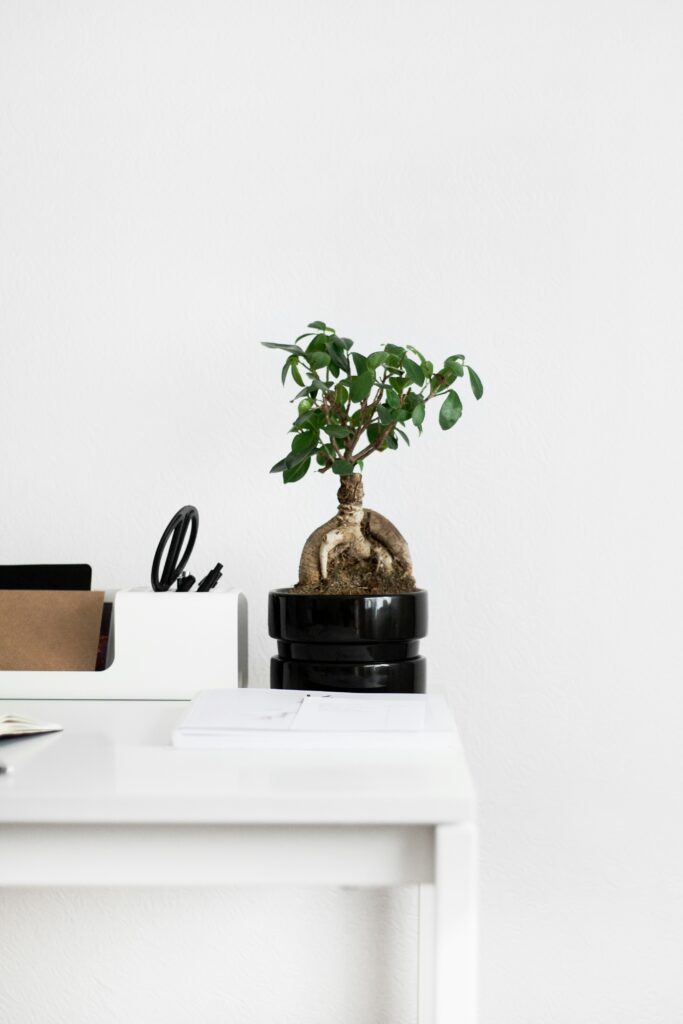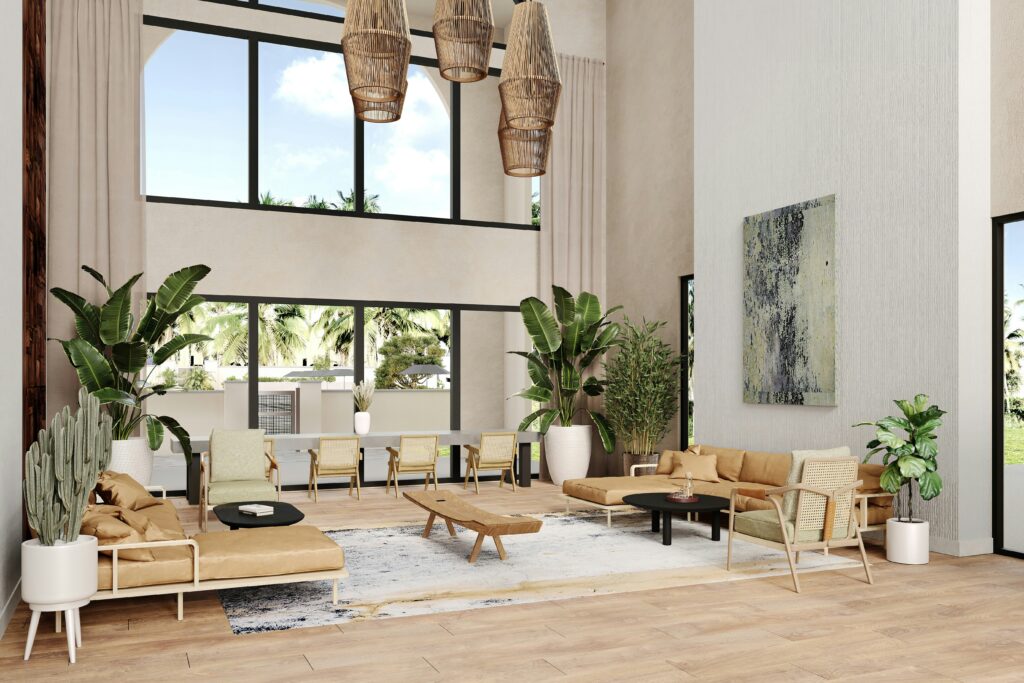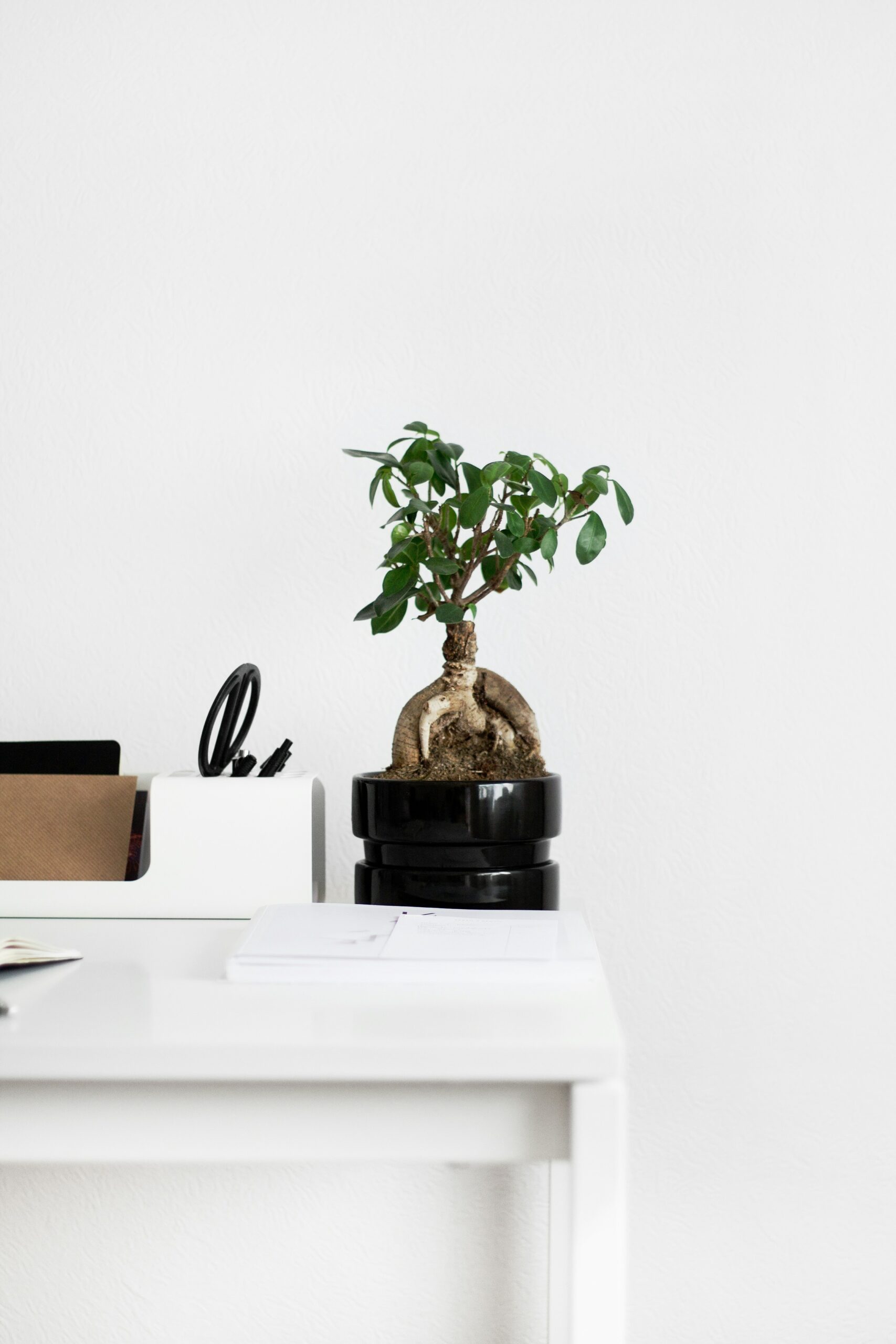By Mercedes Quintanilla
While biophilic design is often associated with grand spaces and immersive environments, its true power lies in its adaptability. Even the most intimate corners of a home or office can become deeply restorative when nature is thoughtfully invited in.
You don’t need to tear down walls or start from scratch. What you need is intention — and a few subtle but powerful choices.
These are refined, human-centered strategies to integrate biophilic design into smaller spaces without compromising beauty, function, or soul.

NATURAL MATERIALS AND TEXTURES
In spaces where outdoor views may be limited or nonexistent, materials become messengers of nature.
Choose finishes, textiles, and surfaces that reflect the patterns, textures, and tones found in the natural world: handwoven fibers, raw woods, soft stone, and organic textiles. These elements ground the body and soften the energy of the space.
Add mobile garden installations, potted arrangements, or even a single thoughtfully placed planter to create visual moments that connect the senses to something alive.
ORGANIC FORMS
Straight lines speak of control. Curves speak of nature.
Bring flow and softness into the room by selecting furniture and lighting with rounded edges, asymmetry, and natural silhouettes. Organic forms feel more human, more lived-in — and in small spaces, they create movement without clutter.
Whether it’s a sculptural lamp, a curved chair, or a ceramic vessel, let every piece echo the imperfect elegance of the natural world.
NATURAL LIGHT AS A DESIGN ESSENTIAL
Light is more than a utility — it is a design material in itself.
Prioritize natural light wherever possible. Position seating and work areas near windows. Remove heavy furniture or clutter that blocks the daylight. Keep curtains sheer and allow light to shift throughout the day.
Even a small window can become a source of daily rhythm and emotional spaciousness when honored.

COLOR THAT CONNECTS YOU TO THE EARTH
In biophilic design, color is not decorative — it’s restorative.
Soft greens reflect vitality and calm. Blues invite breath and inner stillness. Earth tones like terracotta and sand ground us. These shades, when thoughtfully placed in rugs, textiles, and wall art, can shift the nervous system gently toward peace.
Avoid saturated or artificial hues. Instead, lean into colors with a touch of grey, clay, or shadow — the kind of tones nature would whisper, not shout.
SPACES THAT FEEL SAFE, CLEAR, AND ALIVE
Small spaces thrive on clarity. Define areas by purpose — a reading nook, a quiet desk, a ritual corner — and design each one to support presence rather than distraction.
This not only enhances focus and relaxation but also creates the sense of containment we crave in a fast-paced world.
BIOPHILIA AS A STRATEGIC GESTURE OF CARE
Biophilic design is not about decoration. It’s about restoration — and that begins with how a space makes you feel the moment you step inside.
Even the smallest environments can become a sanctuary when guided by intention. Whether you live in a sunlit loft or a compact apartment, the intelligence of nature can be woven in — softly, soulfully, and with purpose.
Because beauty doesn’t need to be perfect.
It needs to be alive.
References.
✓ Learning from Nature. (2018, January 22). Human Spaces. https://blog.interface.com/learning-from-nature/

Read the Comments +